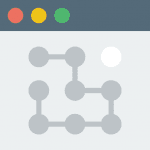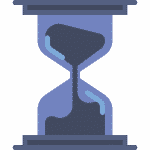Seven signs that your PC/laptop is definitely infected with a malware1. Pop-Up Ads2. Antivirus Disabled Automatically3. New / Unknown Programs Launching4. Web Browser acting out of Control5. Friends complain about receiving spam messages from you6. Slow-down of PC7. Increased Internet Bandwidth UsageHow to avoid a Malware Infection?
How do you know if there is Malware on your computer? To make it easier, researchers at MalwareFox have compiled a list of the definitive signs of malware infection. Go through each one of them and find your symptoms.
1. Pop-Up Ads
This is the most common form of malware, known as adware. It pops up advertisements and various kinds of messages on a user’s system. These ads are generally about discount offers, surveys, dating or lottery winning. Some ads may resort to scaring users. Either by telling users that there is a problem in their computer system or that their bank account information is expiring. These ads are not only annoying but also dangerous because they might have hidden spyware inside them. An infection might result in personal identity theft and financial loss. To get rid of adware or spyware, you should use effective anti-malware software like MalwareFox.
2. Antivirus Disabled Automatically
If you have security software installed, its real-time protection might be disabled. In some cases, your system’s update module may not seem to be working. Malware is developed by cunning minds that want to remove any obstacle that prevents running a malicious process on a user’s computer. Antivirus programs can create a problem in the full functioning of malware programs and hence, it’s often disabled automatically. This is an alarming situation that should be dealt with immediately. Advanced malware cannot be removed with traditional antivirus programs and that’s why a full scan of your computer with anti-malware program is essential.
3. New / Unknown Programs Launching
Are you seeing new icons on your desktop? Any unknown programs starting up as soon as you boot up your computer? If yes, then it is probably a malware infection that was installed previously with some other software. They are known as Potentially Unwanted Programs (PUP Malware) that come bundled with freeware programs. Of course, that doesn’t mean all free software programs are malware, but many developers use this kind of technique to make money. To avoid it, you must be careful when installing any programs and should not agree to any installations without reading the agreement first. Tools like Unchecky should be used to prevent unwanted program installation.
4. Web Browser acting out of Control
Browser Hijacking is a form of malware which makes your web browser begin to act weird. Search engines might get redirected to pages that are combinations of fake sites and ads. Or your homepage might get changed without your consent. Or you might be forced to visit certain, random webpages. Programs like MalwareFox have a browser cleanup module that can remove this malware.
5. Friends complain about receiving spam messages from you
Hackers can gain control of your social media or email accounts without even knowing your password. They sometimes just steal a cookie from an active user session and use it to authenticate a login to one of your accounts. Once compromised, accounts can be used to send spam messages to your contact list and spread malware to your friends’ computers. To get ahold of the situation, you must log out of your online account from all devices. Then, set a strong new password that is difficult to guess. Use of 2-Factor Authentication and Password Manager is recommended in such cases.
6. Slow-down of PC
If computer boot up is taking longer than usual, it may be a symptom of rootkit, which gets embedded into your processor’s memory. There might be slow down in the overall performance of your computing too. It happens because malware uses up available system resources leaving less space for other legitimate programs to operate normally. You should immediately check running processes in Task Manager of your Windows system. Look out for suspicious names in the list or run an anti-malware scan if nothing is found.
7. Increased Internet Bandwidth Usage
Malware communicates with hackers either to transmit user data or receive information about a user’s further activities. They generally use what’s known as a Command and Control server for this purpose. Due to an increase in network activity, internet bandwidth gets utilized at a faster pace. You must monitor network activity, specifically the programs that are uploading data in the background. Programs like Glasswire for Windows and Little Snitch for Mac might come in handy.
How to avoid a Malware Infection?
You must be well educated about cyber security to avoid such risks. Knowing how malware works and spreads can help you stay safe. It is far easier to prevent a malware attack than you think. Make sure you act wisely while browsing internet.
Never download files from untrusted sources / unknown email senders. Avoid visiting suspicious sites. Take immediate action to remove unwanted applications. Always have a primary antivirus and antimalware protection program






